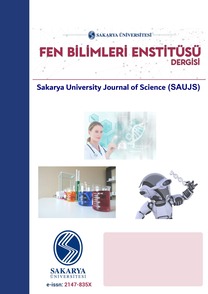Akıllı telefon temelli birey takip sistemi
A personal tracking system based on smartphone ABSTRACT
___
- [1] Su, X., Tong, H. and Ji, P. (2014) "Activity Recognition with Smartphone Sensors", Tsinghua Science and Technology, vol. 19, no. 3, June, pp. 235-249.
- [2] Dai, J., Bai, X., Yang, Z., Shen, Z., Xuan, D. (2010) "Mobile phone-based pervasive fall detection", Personal and Ubiquitous Computing, vol. 14, no. 7, April, pp. 633-643.
- [3] Martin, E., Vinyals, O., Friedland, G., Bajcsy, R. (2010) "Precise Indoor Localization Using Smart Phones", Proceedings of the international conference on Multimedia ACM MM'10, New York, USA, pp. 787 - 790.
- [4] Zhang, R., Bannoura, A., Höflinger, F. (2013) "Indoor Localization Using A Smart Phone", IEEE Sensors Applications Symposium (SAS)
- [5] Bayıroğlu H., Ayan, K. (2014) "Android üzerinde web tabanlı çocuk takip sistemi", SAÜ Fen Bilimleri Dergisi, vol. 18, no. 2, pp. 87-91
- [6] Bourouis, A., Zerdari, A., Feham, M., Bouchachia, A. (2013) "M-Health: Skin Disease Analysis System Using Smartphone's Camera", The 8th International Symposium on Intelligent Systems Techniques for Ad hoc and Wireless Sensor Networks, 1116-1120.
- [7] Yavuz G., Kocak M., Ergun G., Alemdar H., Yalcin H., Incel O.D., Akarun, L. and Ersoy C. (2010) "A smartphone based fall detector with online location support", Proceedings of the International Workshop on Sensing for App Phones; Zurich, Switzerland, 2 November 2010, pp. 31-35.
- [8] Habib, M. A., Mohktar, M. S., Kamaruzzaman, S. B., Lim, K. S., Pin, T. M. and Ibrahim, F. (2014) "Smartphone-Based Solutions for Fall Detection and Prevention: Challenges and Open Issues", Sensor, vol. 14, no. 4, April, pp. 7181- 7208.
- [9] Samsung GearFit, [Online], Avaliable: http://www.samsung.com/global/microsite/gear/ gearfit_features.html, 2014.
- [10] Jawbone, [Online], Available: https://jawbone.com/ , 2014.
- [11] Hitachi, [Online], Available: http://www.hitachi- systems.com/eng/news_eng/2013/20130806.html , 2014.
- ISSN: 1301-4048
- Yayın Aralığı: 6
- Başlangıç: 1997
- Yayıncı: Sakarya Üniversitesi Fen Bilimleri Enstitüsü
Tolga ŞEN, Serap CÖMERT ERCAN, Harun Reşit YAZGAN
Uçma hareketinin biyomekaniğinin incelenmesi ve bir robotik kuş tasarımı çalışması
Çevrel titreşim kayıtları kullanılarak yapı dinamik parametrelerinin belirlenmesi
Elif BORU ORAK, Mustafa KUTANİS
MERT ŞEKERCİ, SUAT ÖZKORUCUKLU
METİN İPEK, Mehmet CANBAY, KEMALETTİN YILMAZ
Bulanık x − R diyagramları kullanılarak bulanık süreç yeterlilik analizi
HALENUR SOYSAL KURT, SEMRA BORAN
Taguchi yönteminin gıda sektöründe çok yanıtlı problemin eniyilemesinde uygulanması
23 Ekim 2011 Van depreminin (Mw=7.1) oluşturduğu Coulomb gerilme değişimi
Türkan ERSULAR, Ayşe GÜNEŞ, Yusuf SARI, ERTUĞRUL GÜRBÜZ, HATİCE DURMUŞ, LEVENT GÜLEN
